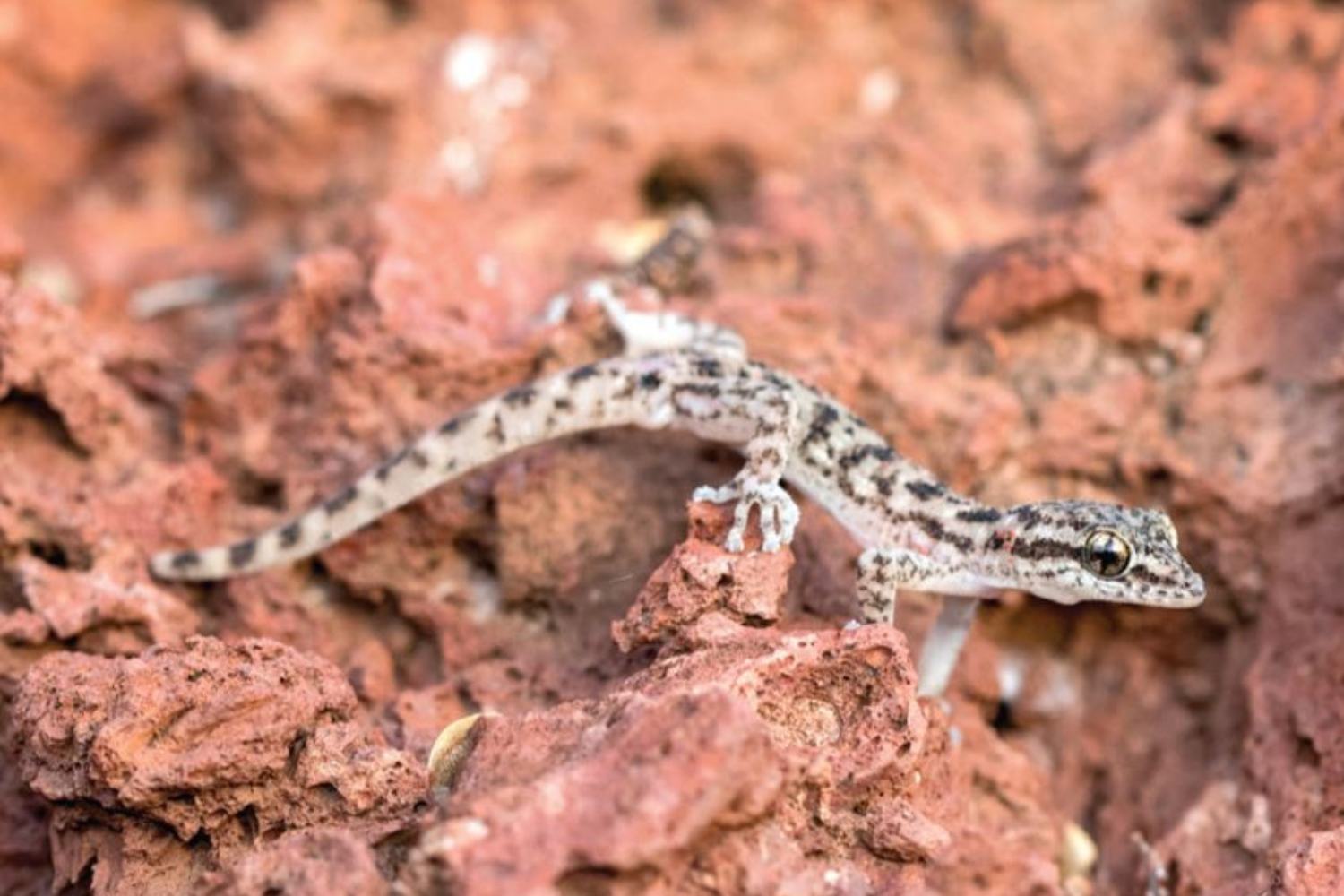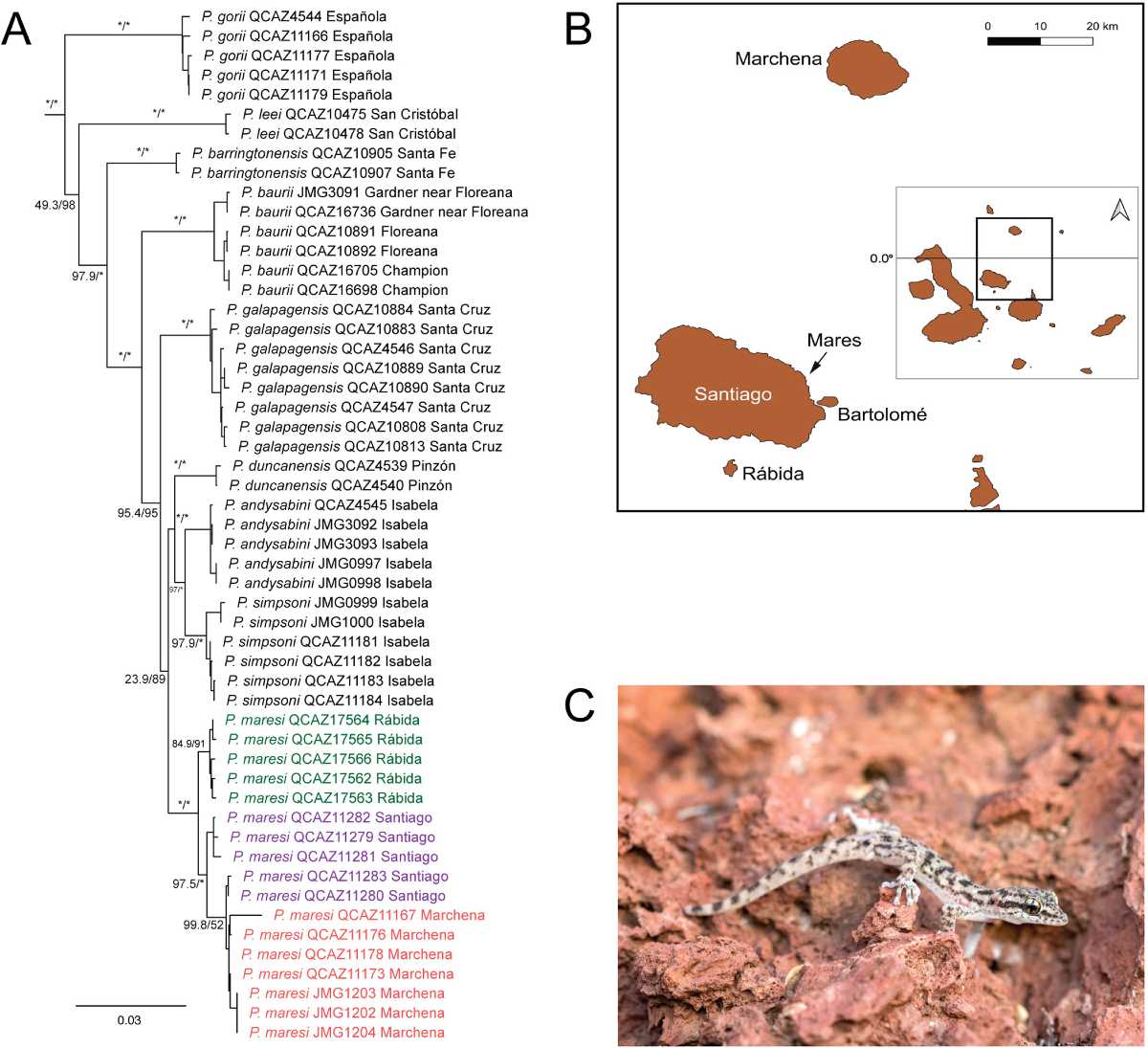The rediscovery of the Mares leaf-toed gecko on Rábida Island in the Galápagos Archipelago highlights the success of a long-term ecological restoration project, showing the resilience of nature when given the chance.

@PLOS One
Table of contents
On the Island of Rábida, located in the Galápagos Archipelago, a small inhabitant that was thought to have disappeared millennia ago has been rediscovered: the Mares leaf-toed gecko (Phyllodactylus maresi). Its last “appearance” on the island dates back to the Holocene, based on fossil remains dated to about 5,000 years ago. Yet today, amidst the rocks and dry vegetation, this tiny reptile has made its way back into the eyes of science.
The rediscovery of the Mares leaf-toed gecko was documented in a study published in PLOS ONE, which analyzed individuals observed during scientific expeditions in 2019 and 2021.
After 5,000 years, it’s back! 🦎Meet the Leaf-Toed Gecko — once thought to be extinct on Rábida Island in the…
Posted by Island Conservation on Tuesday, July 22, 2025
The research team, consisting of experts from the QCAZ Zoology Museum at the Catholic University of Ecuador, Island Conservation, the Galápagos National Park, and other organizations, gathered morphological and genetic data to confirm the identity of the population.

@Plos One
A successful ecological restoration project
The gecko’s return wasn’t a mere coincidence; it’s the tangible outcome of an ecological restoration project launched in 2011. The goal was clear: eliminate invasive rodents, particularly the rats introduced by humans, which posed a threat to the island’s native species.
Once these predators were removed, the ecological conditions on Rábida began to change rapidly, paving the way for the resurgence of numerous species, including the gecko. This is a concrete example that eliminating threats can allow struggling species to reclaim their natural space.
A unique population
While the Phyllodactylus maresi is known to inhabit other islands in the archipelago, such as Santiago or Bartolomé, the population on Rábida displays significant genetic differences. Morphological and genetic analyses confirmed that this population represents a distinct evolutionary unit. This makes the tiny reptile even more valuable from a biodiversity conservation standpoint.
A lesson of hope
The case of the Mares gecko demonstrates that when environmental threats are tackled strategically, nature can surprise us. As Paula Castaño from Island Conservation pointed out, nature has an extraordinary capacity to regenerate when given space and time. Despite their fragility, islands can become laboratories of ecological resilience. The return of this species teaches us that it’s still possible to undo the damage if we act in time and with vision.
Fonte: PLOS One
